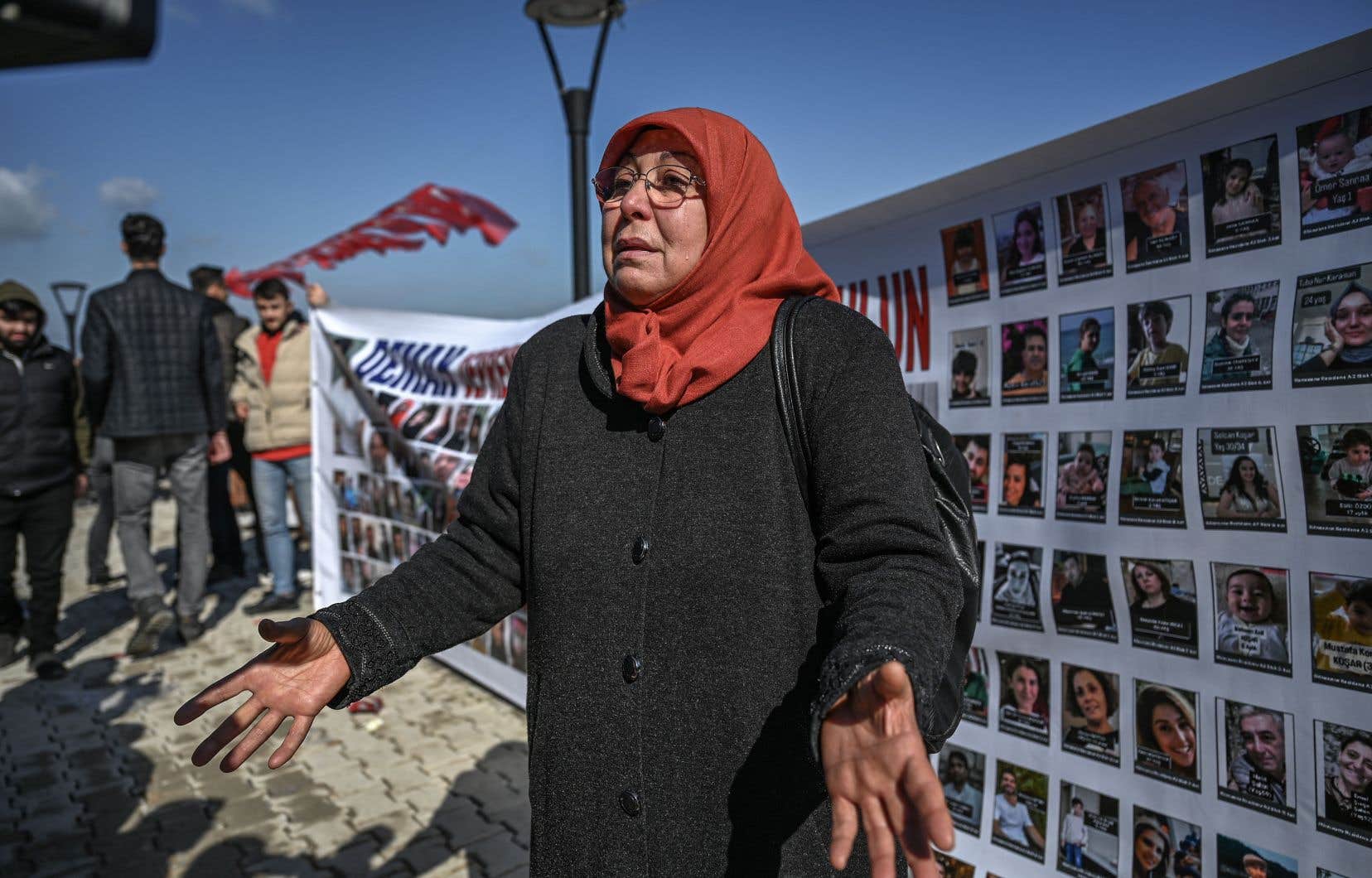With tense faces, a portrait of their missing child or parent clutched in their arms, relatives of the victims gathered by the thousands on Tuesday in the ruins of the worst earthquake in contemporary Turkey.
At 4:17 a.m., the time of the first tremor of the earthquake which killed more than 53,500 people in the south and southeast of Turkey on February 6, 2023, the families and friends of the missing gathered in the main cities affected.
With the deaths in neighboring Syria, the death toll from the disaster stands at nearly 60,000.
But grief still competes with anger, despite President Recep Tayyip Erdogan’s promises of 200,000 new homes by the end of the year, while 700,000 people still live in containers.
A banner brandished by the crowd in Antakya, the ancient ancient Antioch 90% devastated, warned: “We will never forget or forgive”.
The few officials who tried to speak, such as Health Minister Farhettin Koca or the city’s opposition mayor, Lutfu Savas, were heavily booed and the councilor greeted with cries of “Resign!” “.
In Kahramanmaras further north, located around fifty km from the epicenter, stronghold of the ruling AKP party, the head of state addressed a chosen audience after a brief visit to the cemetery.
“Few countries would be as strong as we are in the face of such a catastrophe,” he stressed, handing over the keys to nearly 10,000 new homes to randomly selected families, built by Azerbaijan, a loyal ally of Azerbaijan. ‘Ankara.
Mr. Erdogan also announced the installation of a technical university on site in partnership with the European manufacturer Airbus and the creation of an industrial zone dedicated to defense industries in the Hatay region.
The eleven provinces affected by the earthquake, which were already among the poorest in the country, lost their jobs with the disappearance of numerous factories and textile workshops.
The laurels of Antioch
The affected population remembers the hours and days of waiting, in the cold and snow, for help that was overdue.
Frozen in the pain of these 65 seconds that they have been reliving ad nauseam for a year, the survivors huddled together around improvised braziers, holding a laurel branch symbolizing Antakya.
Devastated by grief, they improvised small altars on the ground, placing candles and roses on the very spot where the building stood, the house that swallowed up their loved one, their child, their parents, families. sometimes whole.
Relatives placed between the candles photos of dozens of residents of the Rana residence, which collapsed, like thousands of others in a few seconds under the violence of the shock.
“I don’t have the impression that it was a year ago, for me it was yesterday,” confides Eda Boz, 44, forced to take refuge in the capital Ankara and returned especially for the commemorations.
“In this building lived my childhood friends, school friends. We all knew each other,” she regrets with tears in her eyes, vowing “to return to Hatay”, the province of which Antakya is the capital.
A brief moment of tension opposed the families wishing to worship in front of the residence to the police forces who wanted to prevent them from accessing the site, before resolving to let them pass, noted AFP.
“We will continue our work until our cities are rebuilt and the last citizen whose house has been destroyed or rendered unusable is brought to a safe home,” President Erdogan promised on X, despite the mistrust that accompanies the government action since the tragedy.
In Antakya, Esat Gül, a 19-year-old student, hardly believes it.
“A year has passed, the city is still in ruins,” he says. “I don’t have much hope for the future anymore. Many young people my age are trying to leave the country,” he adds, throwing a rose into the Orontes River which runs through the city.
